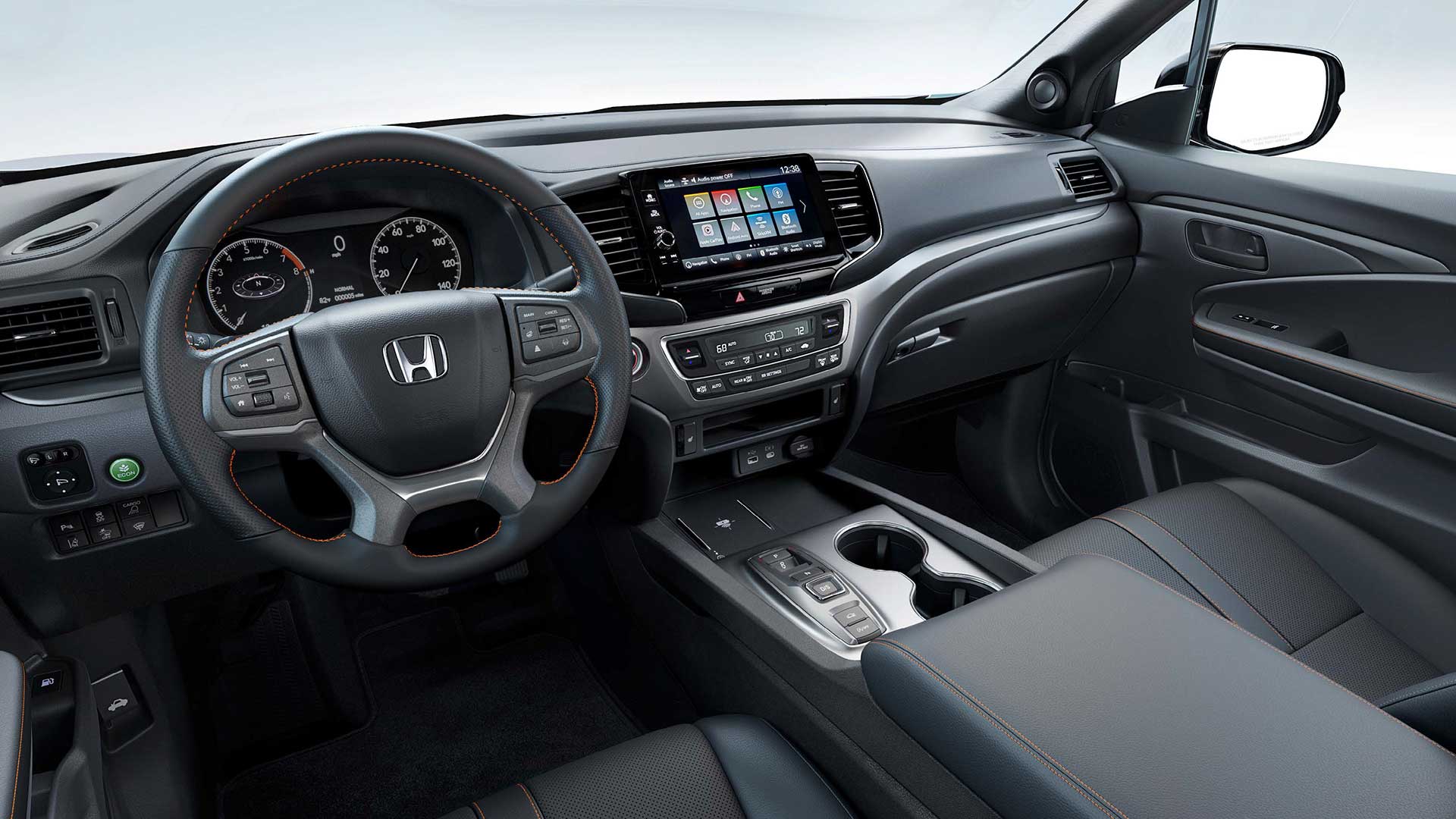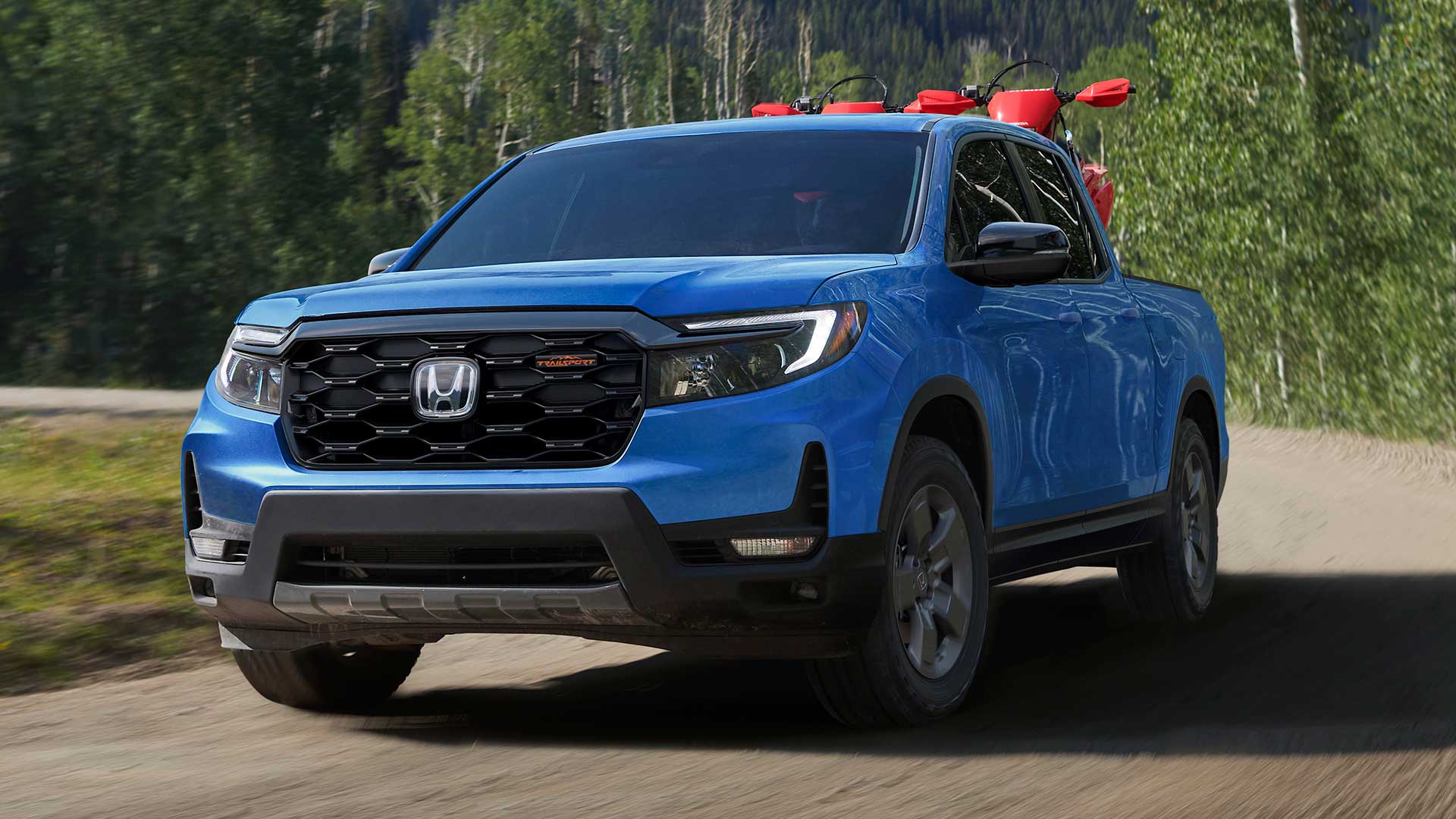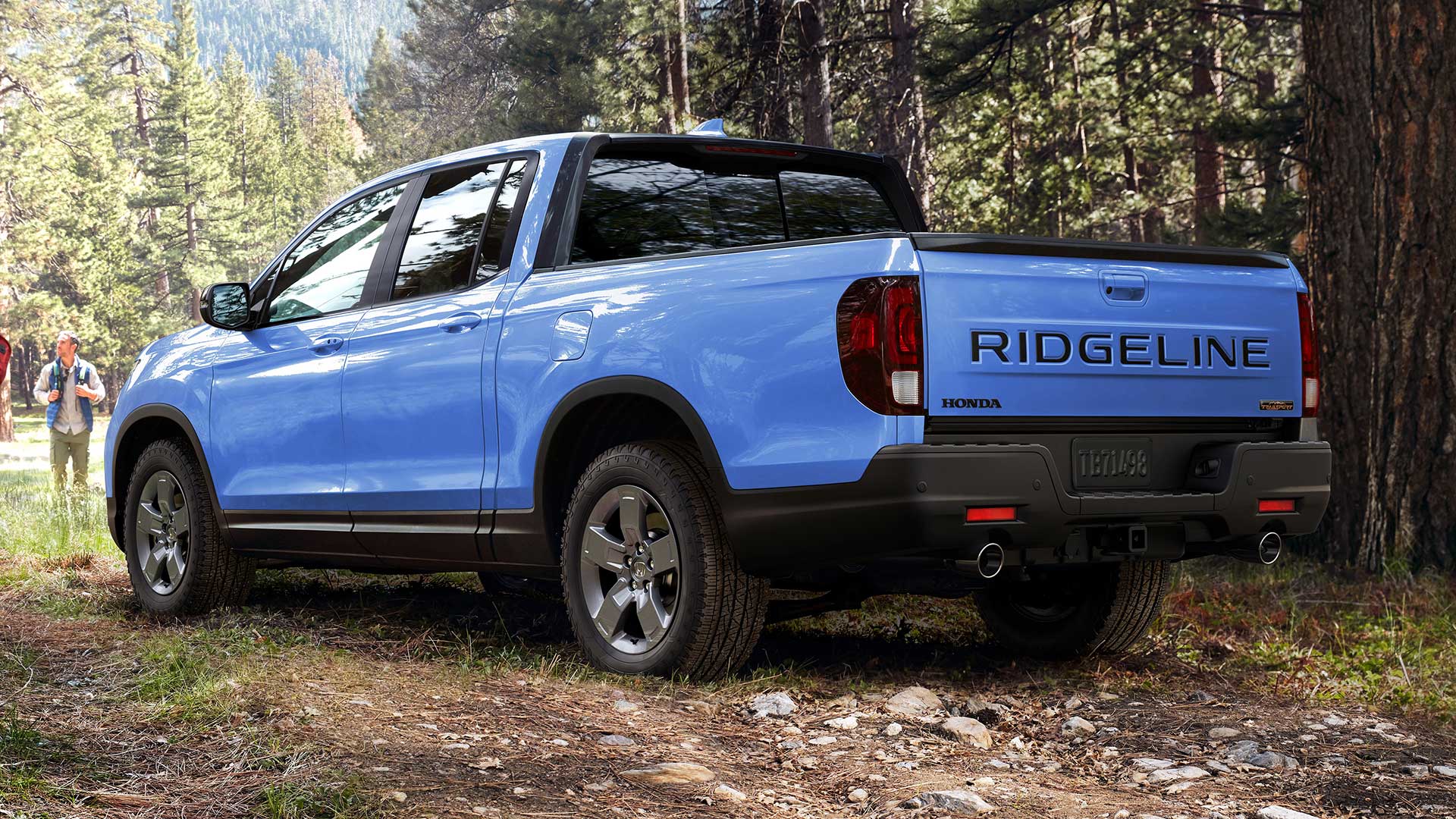2010 Ford Mustang
Like any winner, the trick to a car staying out-in-front of its rivals is a constant series of careful nips, tucks, and updates. Now, it’s been less than five years since Ford completely redesigned their original pony car, the Mustang. That rework produced a totally modern sport coupe that quickly became an industry benchmark. A benchmark that a lot of others are now taking an aim at. So, it’s time for a nip, tuck, and maybe a whole lot more.
With the 2010 Mustang, Ford has actually gone far beyond the typical mid-cycle freshening. The result is a totally up-to-date interpretation of the original pony car, with a trimmer, sharper, more muscular form.
The effort readies the Mustang - coupe, convertible, and glass hardtop - to face-off against a herd of rivals like the new Chevrolet Camaro, Dodge Challenger, and even the Nissan 370Z.
While the platform is largely unchanged, the new Mustang is wrapped in new and much sharper sheet metal. The result is more revisited ‘69 than ever.
A more swept back front end and narrower grille are adorned by an energized pony logo - charcoal on our GT, chrome on the V6. On the GT, the grille is also home to retro fog lamps, flanked by turn signals, and classic round headlamps at the edges, and the long hood is now landscaped with chiseled lines and a Ford signature power dome.
 The new Mustang’s more svelte profile is punctuated by finely drawn wheel flares and a more defined character line that slices rearward.
The new Mustang’s more svelte profile is punctuated by finely drawn wheel flares and a more defined character line that slices rearward.
The fastback greenhouse still leads back to rear quarter windows and chopped corners. But around those corners sit new taillights with sequential turn signals, a novelty not seen on a Ford product since the 1970’s, all finishing with bolder rear badging, and on the Mustang GT, a deck lid spoiler, and rolled chrome exhaust tips.
All wheels are new and up an inch, ranging from 17s to 19s.
This revisionist dream really picks up speed inside where the classic twin-cockpit cabin is far more refined, dare we say less “domestic” than before.
While the new one-piece instrument panel downplays the classic twin-cockpit theme, it plays up softer touch points, and vastly improved fit and finish. Chrome-ringed round gauges and added aluminum trim highlight the upscale appearance, as does the pony-stamped steering wheel with aluminum spokes and cruise plus available audio controls.
The circular center air vents have been replaced by rectangular ones, which are positioned atop an all-new center stack.
Here you’ll find user friendly-technologies such as the latest version of Ford Sync with 9-1-1 Assist and Vehicle Health Report, as well as an available eight-inch navigation screen with back-up camera.
This year MyColor expands beyond the gauge cluster, allowing adjustable ambient lighting from cup holders to sill plates, using a palette of 125 hues.
As before, the rear seat remains 2+2 tight, but retains its split fold to add versatility to the 13.4 cubic foot trunk.
The new Mustang sees far less change in the engine bay, but that’s okay. The base 4.0-liter V6 remains at 210 horsepower and 240 pound-feet of torque. The GT’s standard 4.6-liter V8 gets a slight boost thanks to a cold air induction system similar to the Bullitt, and now rates at 315 horsepower and 325 pound-feet.
But if monster performance is what you seek, Ford has also announced a 2010 Shelby GT500. Its supercharged 5.4-liter V8 is expected to make a whopping 540 horses and 510 pound-feet of torque.
The standard Mustang pushes power rearward through a 5-speed manual or 5-speed automatic. The manual’s upgraded shifter has a more solid feel - less clunky, if you will.
 The same goes for the suspension, which has been retuned for better ride and handling. Springs and shocks have been adjusted, but it’s still defined by the same MacPherson strut design up front, and a three-link geometry live axle with panhard rod in the rear. A stiffer suspension package using GT500 hardware and summer performance tires will be available shortly.
The same goes for the suspension, which has been retuned for better ride and handling. Springs and shocks have been adjusted, but it’s still defined by the same MacPherson strut design up front, and a three-link geometry live axle with panhard rod in the rear. A stiffer suspension package using GT500 hardware and summer performance tires will be available shortly.
We sorted out a Mustang GT by carving up the canyon roads around Malibu, California. It certainly is tighter and more balanced than ever before. Both body roll and understeer have been minimized, all while enhancing ride quality, which is not just smoother, but also quieter, that is until you test the V8’s wonderful throttle volume.
Electronic stability control joins traction control and ABS as standard. The stability control can be turned on and off, and has a Sport Mode on the GT.
Pricing for the 2010 Mustang is up slightly but still covers a moderate spread, from $21,845 for the base V6, to $28,845 for the V8 GT. Convertible base prices are 2 grand higher.
But this new horse does have to be fed. Government Fuel Economy ratings are 16 city/24 highway for the V6 automatic, and 15 city/22 highway for the GT V8 automatic.
The 2010 Ford Mustang is more of a looker and doer than ever. The original pony car has answered its critics with a leaner and meaner makeover, adding both a vastly improved interior and driving experience. This steed is nicely done, and clearly ready for the pony car wars that are sure to follow.
Specifications
- Engine: Gt 4.6-Liter V8
- Horsepower: 315
- Torque: 325 Lb Feet
- EPA: 16 MPG City/ 24 MPG Highway
2024 Honda Ridgeline TrailSport
It Does Truck-Like Things Better Than Ever
Honda brought something truly unique to the pickup truck scene when their mid-size Ridgeline debuted for 2006. In 2017, it moved towards becoming a little more true truck-like, both in form and capability, now with yet another step in that direction for 2024. So, let’s see if the Ridgeline is really hitting its stride.
For 2024, it’s all about making this Honda Ridgeline better than ever. There are styling tweaks outside, along with tech and functional improvements inside, but the biggest news is the Ridgeline has now joined Honda’s TrailSport family of off-road inspired vehicles. This more-true-trucklike, second-gen Ridgeline been around since 2017, receiving periodic updates over the years; but joining the TrailSport family is the biggest leap yet.
Primarily, the TrailSport transformation includes General Grabber all-terrain tires, mounted on new Pewter Gray 18-inch wheels, steel underbody protection, and retuning the strut front, and multi-link rear suspension for added wheel articulation. And while we always appreciate the additional traction of off-road tires, the Ridgeline’s standard i-VTM4 all-wheel drive, with Intelligent Traction Management and snow, sand, and mud settings, was already quite capable of handling all but the most extreme off-roading, ground clearance of just 7.6 inches being it’s only real hinderance.
A 3.5-liter V6 remains under the hood as it has since the Ridgeline debuted for 2006; the current version outputs 280 horsepower and 262 lb-ft of torque, plenty enough muscle to handle its 5,000-lbs. towing capacity. A nine-speed automatic transmission with paddle shifters and bevy of push and pull buttons on the console replaced the six-speed automatic back in 2020.
In addition to adding TrailSport capability, a big focus for this update was making it more user-friendly inside, starting with the central touchscreen growing from 8 to 9 inches. It also gets faster processing speeds, menus have been simplified, and the native navigation system is improved with better graphics. It’s accompanied by a new digital instrument cluster, along with an upgraded center console with more storage space. Unique TrailSport touches include heavy duty floormats, leather-trimmed seats, orange stitching throughout the cabin, and orange ambient lighting.
The Ridgeline continues to offer things available nowhere else in the pickup truck market.
Exterior styling doesn’t exactly shout “macho big rig coming your way,” but the more vertical face and larger grille that arrived for 2021, along with this year’s added TrailSport elements, do continue to toughen up the Ridgeline’s image. The 5’4” bed remains highly functional with no large wheel well intrusions, multiple tie-downs points, lighting and even speakers. And of course, the Ridgeline continues to offer things available nowhere else in the pickup truck market, like the dual-action tailgate, and large, lockable, drainable, underbed storage. Not to mention being able to drive around in true car-like comfort, something we took full advantage of on our way to our Mason Dixon Dragway test track.
There was great grip off the line, with full power arriving smoothly but quickly, helping us to get to 60 in 7.0 seconds flat, a tenth quicker than the last Ridgeline we tested. That power delivery stayed fairly consistent the whole way down the track, barely interrupted by the nine-speed automatic’s smooth shifting. Our best quarter-mile run was 15.5 seconds at 90 mph.

The revised suspension and knobbier tires didn’t really seem to add or detract from handling prowess, as it felt as solid, nimble, and car-like as it always has through our cone course. Perhaps a little less stiff than before, but good feedback, tight steering, and minimal body roll for a pickup, made for a very confidence inspiring experience. In our braking test, we stopped in a respectable average of 123 feet from 60, with only moderate amounts of nosedive and good feel through the pedal.
There is, however, a slight reduction in Government Fuel Economy Ratings with the all-terrain tires; 18-City, 23-Highway, and 20-Combined, our average, right on, at 20.4 mpg of Regular. That’s a slightly below average Energy Impact Score of 14.9 barrels of yearly oil use, with CO2 emissions of 7.4 tons.
TrailSport pricing falls in line just under the Ridgeline’s top Black Edition trim with a starting price of $46,375, about five grand over a base Ridgeline Sport.
So, whether you consider the Honda Ridgeline to be a “real” truck or not, this ruggedly smooth 2024 TrailSport does truck-like things better than ever. And we’re not just talking about the slight upgrade in off-road performance, we’re talking about a flexible bed to help you get chores done, and the ability to tow or haul with comfort and flexibility other trucks can only wish for. It’s why the Ridgeline brings more first-time buyers to Honda than any other vehicle, and why it continues to be a great choice in the growing midsize truck realm.
Specifications
- Engine: 3.5-liter V6
- Transmission: 9-speed automatic
- Horsepower: 280
- Torque: 262 lb-ft
- EPA: 18 City | 23 Highway | 20 Combined
- 0-60 mph: 7.0 seconds
- 1/4 Mile: 15.5 seconds at 90 mph
- 60-0 Braking (avg): 123 feet
- MW Fuel Economy: 20.4 mpg (Regular)
- Max Towing Capacity: 5,000-lbs









